Modeling and post production tutorial by ADC Visualizations (3ds Max, V-Ray, Photoshop).
My name is Andrea, I am the owner of ADC Visualizations, and i'm
gonna share with you the making of "Villa Bonafe - Living room" interior
design concept. So let's start!
CONCEPT
This living room is a part of an interior design concept for a house
located in Cortina D'Ampezzo (well known in Italy as nice location for
winter holidays). The location has a nice mountain view outside so the
main goal of the living room was to make this panorama the star of the
house: cold outside but very warm and comfortable when you are inside
the house.
So that was the main idea: a large open space for living/dining room,
with a big window in the front to enjoy the wide terrace and nice
panorama. So i decided for a double height room, wooden ceiling and
floor. I put a modern fireplace in the center of the room. I'm not gonna
go further on design choices because it's not the goal of this
tutorial.
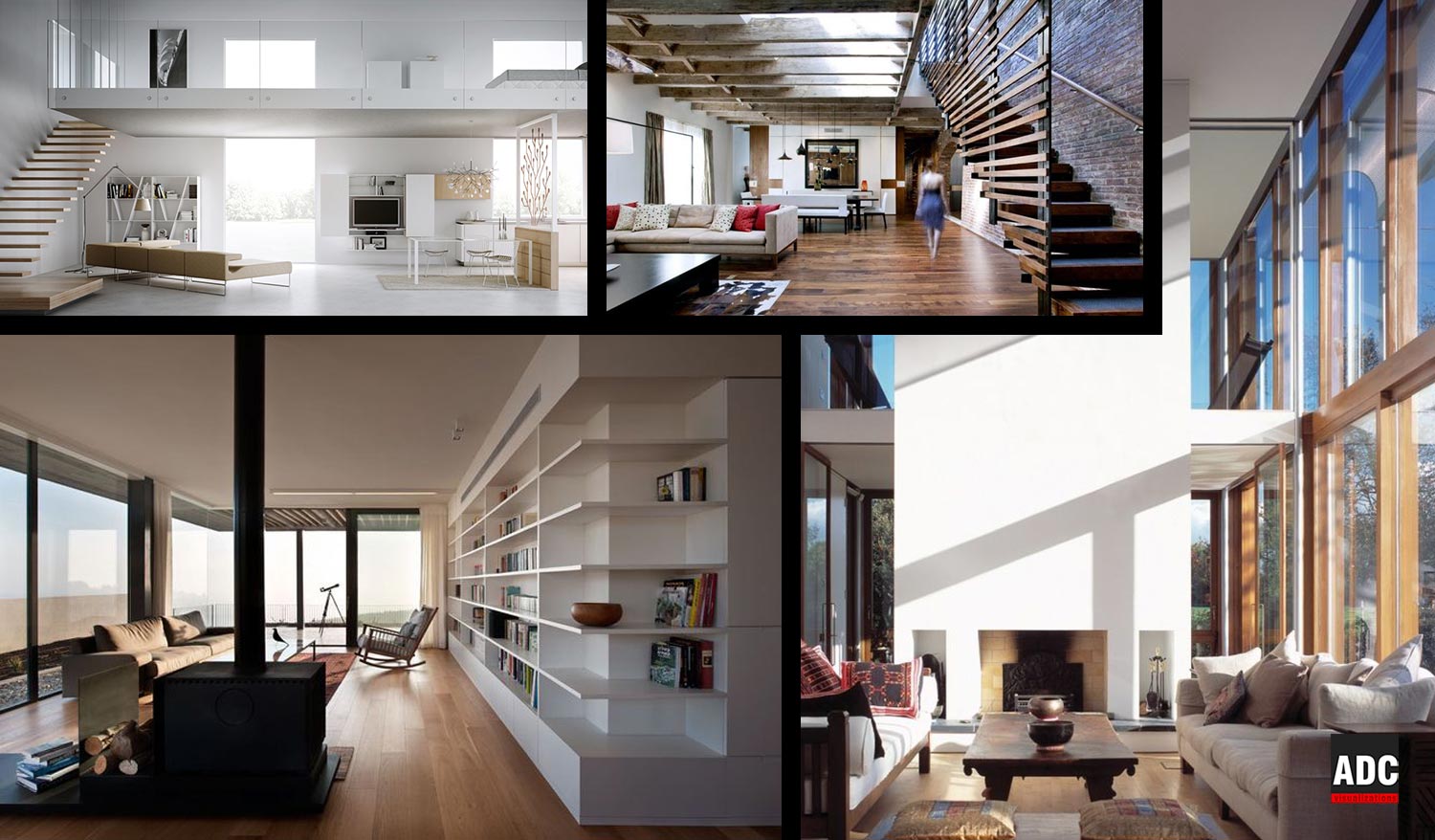
MODELING
To be honest, I dont like to waste time for modeling! I mean - not
anymore! Many years ago I spent days and days modeling pretty much
anything, but today I'm interested on other aspect like lights setup,
finding a good point of view, postproduction, etc... So whenever it is
possible, I use 3d models built by someone else ;). If you don't want to
buy 3d models, you could find a lot of free stuff online, starting from
producers' websites, arch-viz websites. A good source I use pretty
often is... Google 3d models warehouse! You can also get models from
packages like those from Evermotion or other companies. So for this
scene, I modeled walls, floor, ceiling, stairs and windows. This is the
result:

Modeling
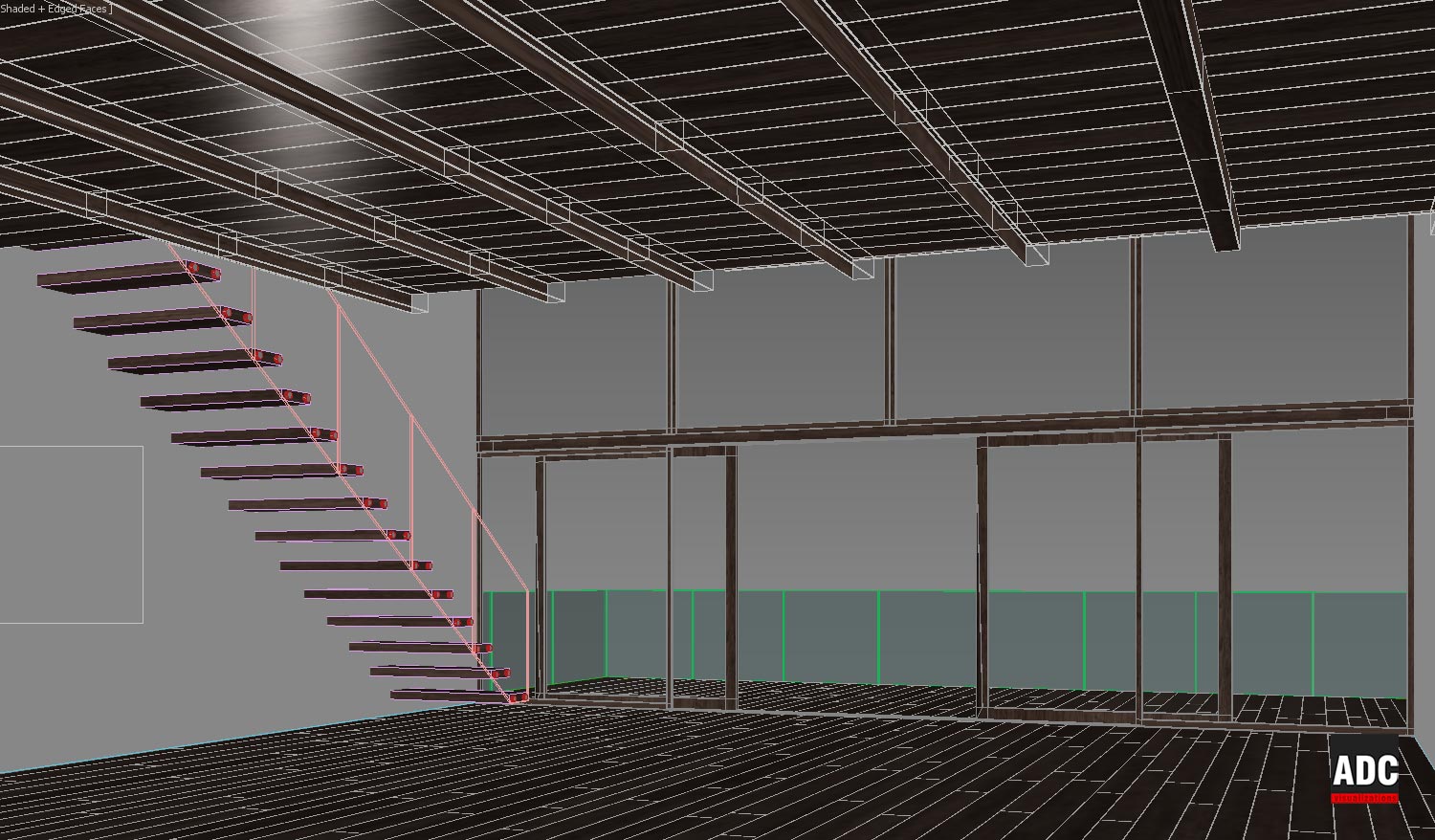
Modeling
Floor was modeled with a free tool called FloorGenerator, which is
perfect for modeling any type of planks. I use it all the time, when I
need to put wooden floor in my scenes.
Now that we have the base model of the open space, the interior
design part goes tricky. I've choosen the furniture, downloaded the 3d
models and then started importing them into my scene. I tried many
layouts till I was satisfied with the final one, where fireplace in the
center divides the living room from the dining room.
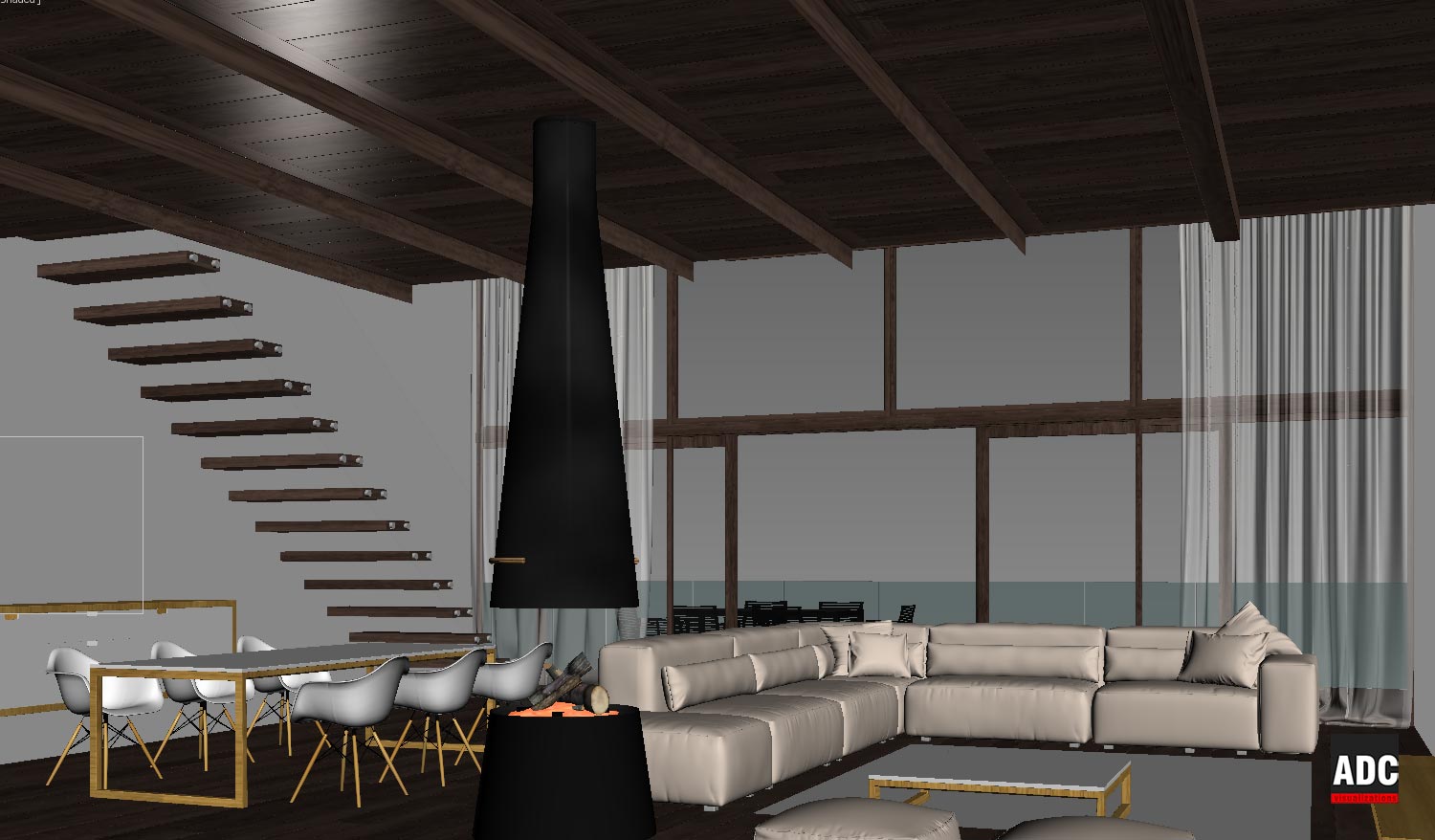
Furniture imported into the scene
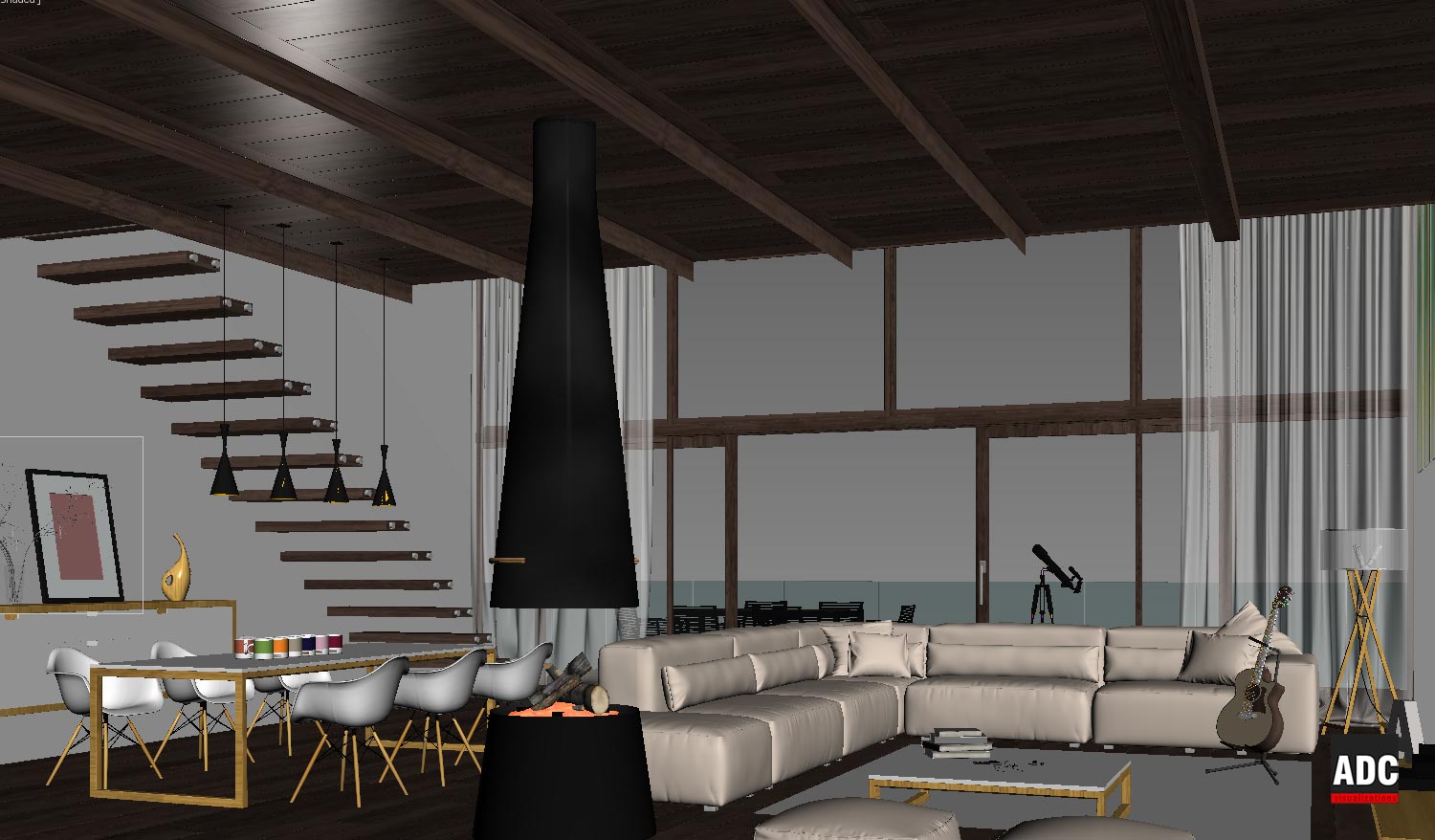
Adding details with still life objects to get a more realistic scene
LIGHTING
Ok it's time see what happens when we hit render! Once we've found
the point of view, it's time to put some lights on the scene. I used
- Vray dome light for ambient diffuse light
- standard Max direct light simulating the sun
- vray plane light outside the main window
- single vray sphere light for the fire.
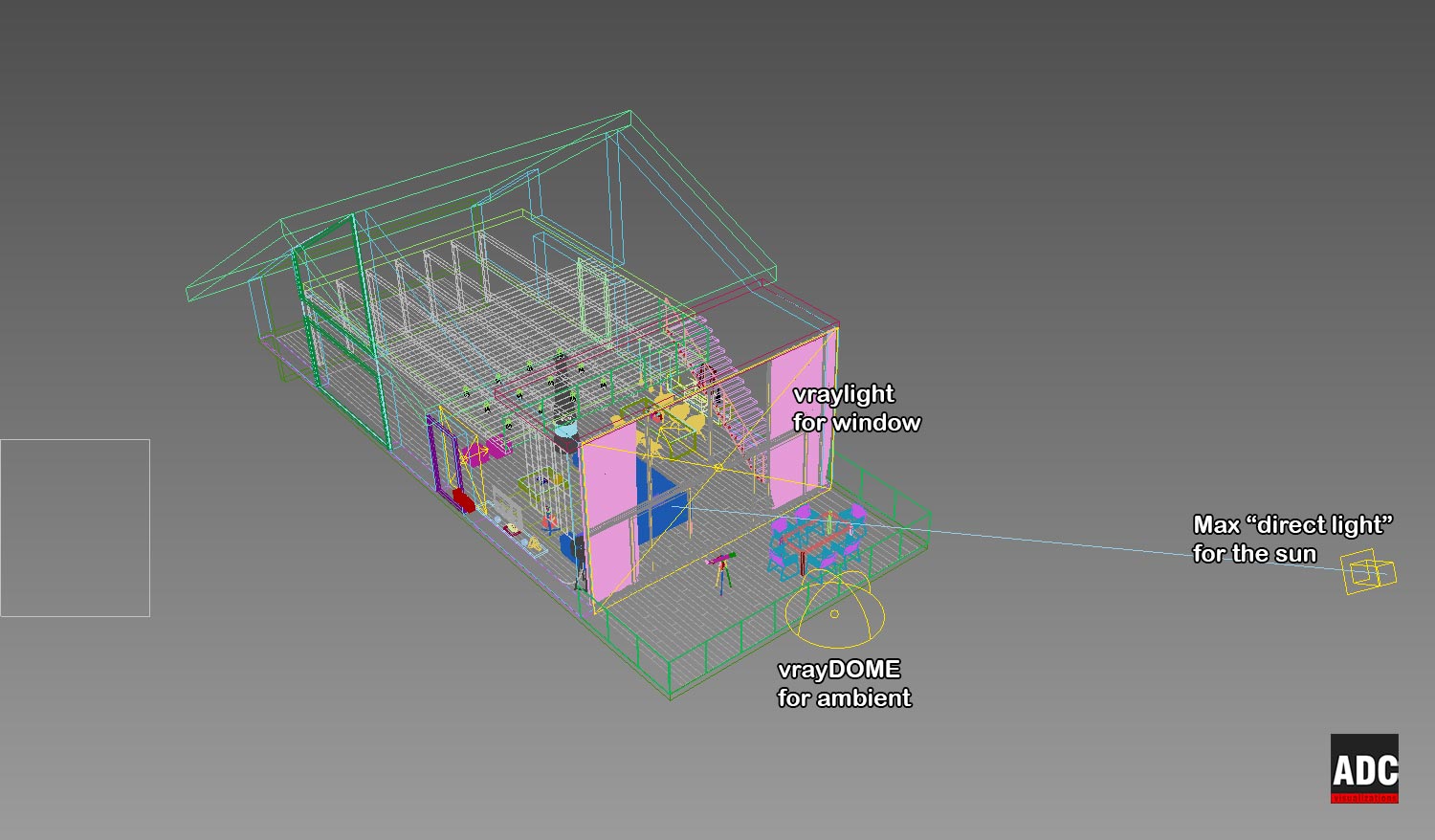
Yes, just 4 lights for the entire scene!
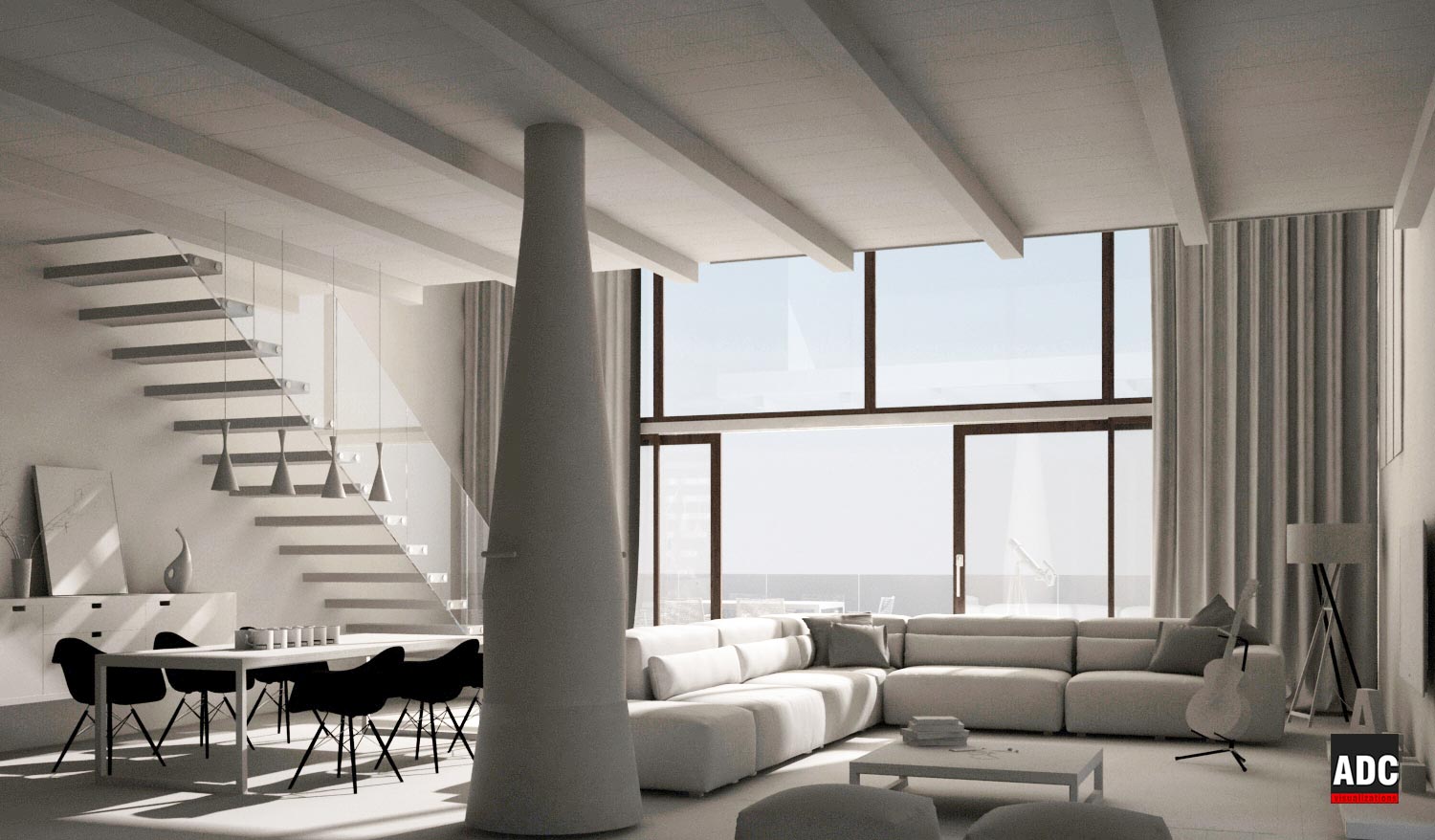
The render with no materials assigned, just to show how lights influence the scene
MATERIALS
Rendering a scene with hyperrealistic materials makes the difference,
this is obvious, but my advise is: try to find a good balance between a
realistic material and rendering times. For example - I don't use value
higher than 12-16 in the reflection/refraction sample slot! The more
you push these values, the less noise you get (which is good), but
rendering times will make you wait forever (I hate when it happens).
In this scene I used basic vray materials with diffuse, bump and
reflection textures - really simple ones. The "hardest" material for
this scene is for the floor. Here's my settings for the floor:
- hilight glossiness 0.55
- reflection glossiness 0.70
- subdivisions: 32 (this is necessary, 'cause a value of 8 or 16 was not good - too much noise)
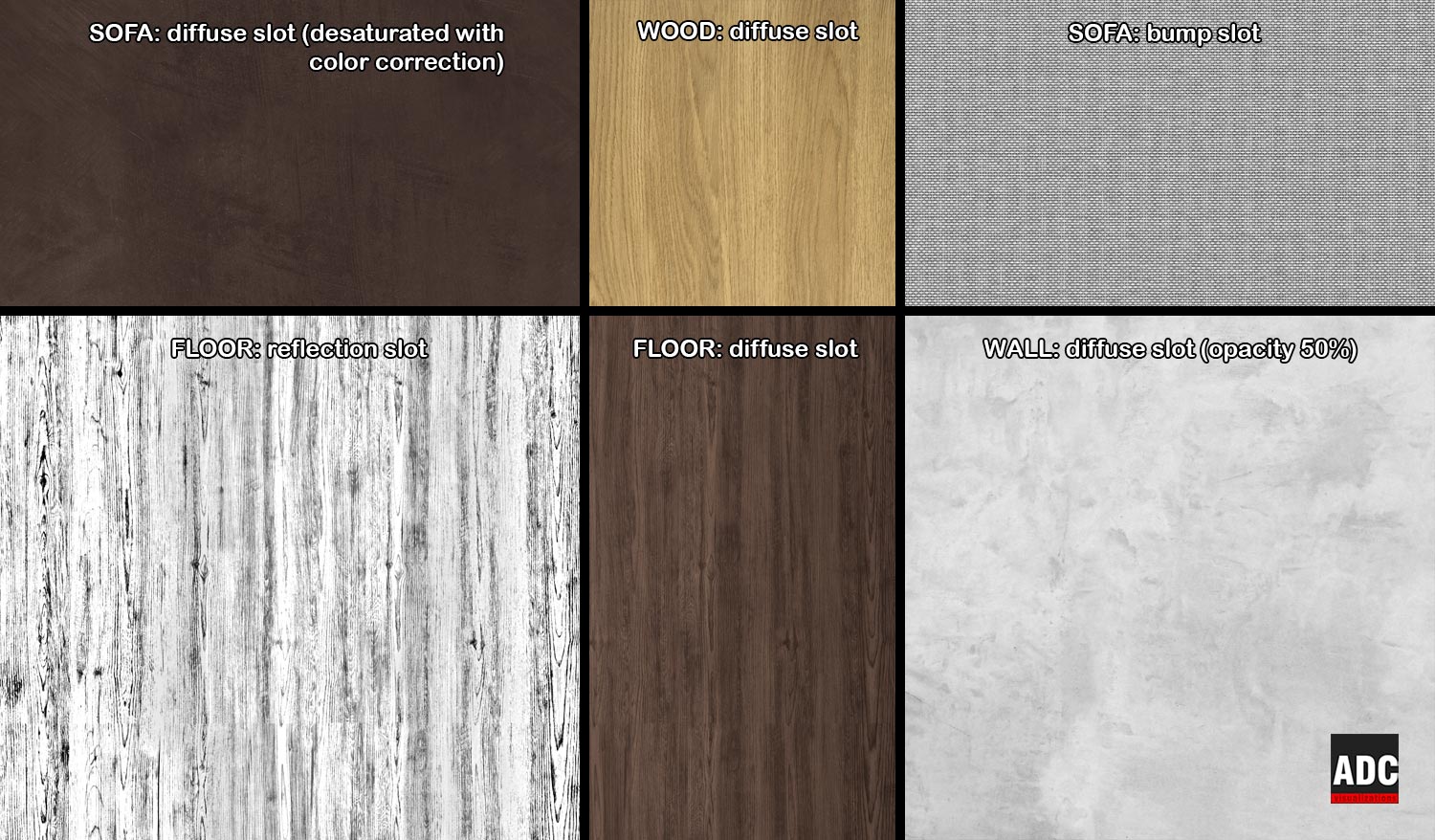
A few textures I used in this scene
Last thing to say about materials is that I really don't care too
much about reaching the perfect effect at the end of the rendering
process. There's a lot of things you can do in post production, the
really interesting part! We'll talk later about this.

Here's a test render, just to see lights and materials behavior (many objects are hidden)
RENDER SETTINGS
Original render size was 5000x3000 px. Vray has many options on GI
tab which depend on the resolution of the final image. Irradiance map
was set to "medium" preset (no changes from defaults) and lightcache was
set to 800 samples with a couple of flags checked (see image). Other
settings are unchanged from default values!
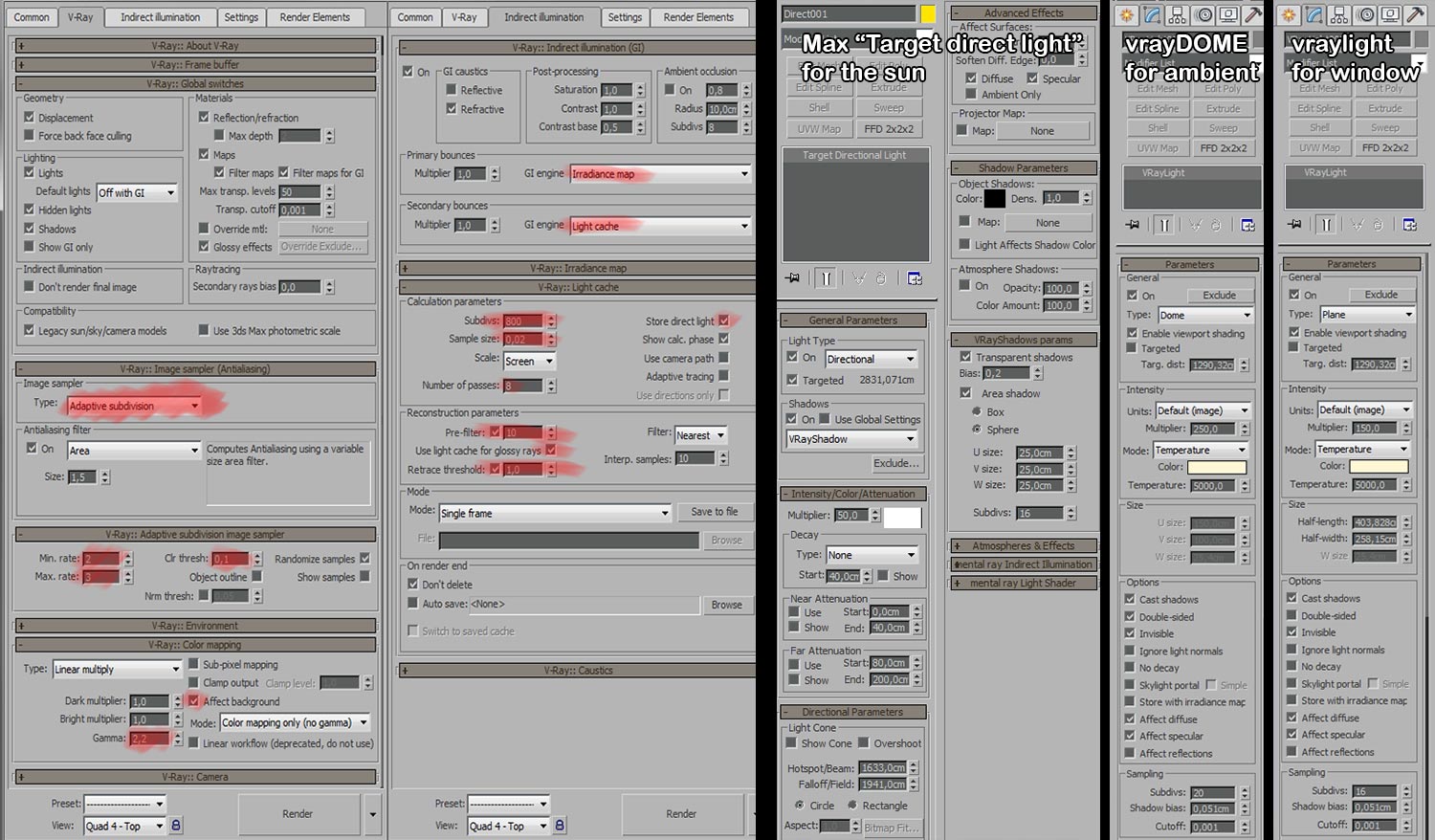
Render settings
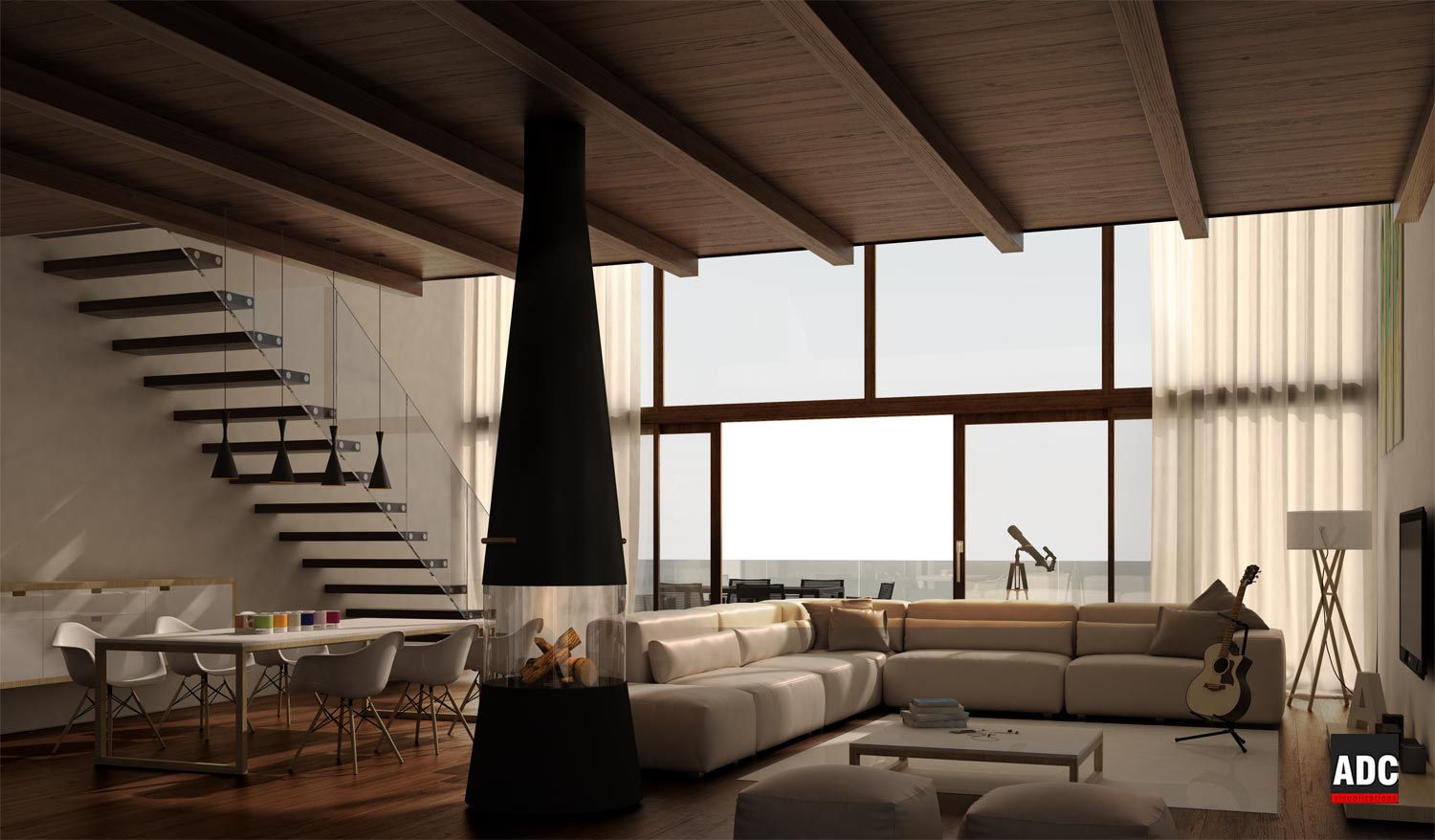
Hit render once again and here's the result of the raw rendering of the full scene
POST PRODUCTION
Many people are wasting a lot of time to test and render until the
render looks perfect. I'm not saying this is a wrong method, but...
since I have to do a single shot (not an animation) there's a lot I can
do to fix things in post production and I can make it look really cool
compared to the raw render! The workflow I'm gonna to explain is very
time saving! It consists of masking parts of the image and tweak it in
Photoshop (my favorite part).
For the masking, I don't use "wirecolor" render element, but
RENDERMASK, a free plugin which creates masks of the selected object(s).
When I discovered this tool I was shocked! It's really cool.
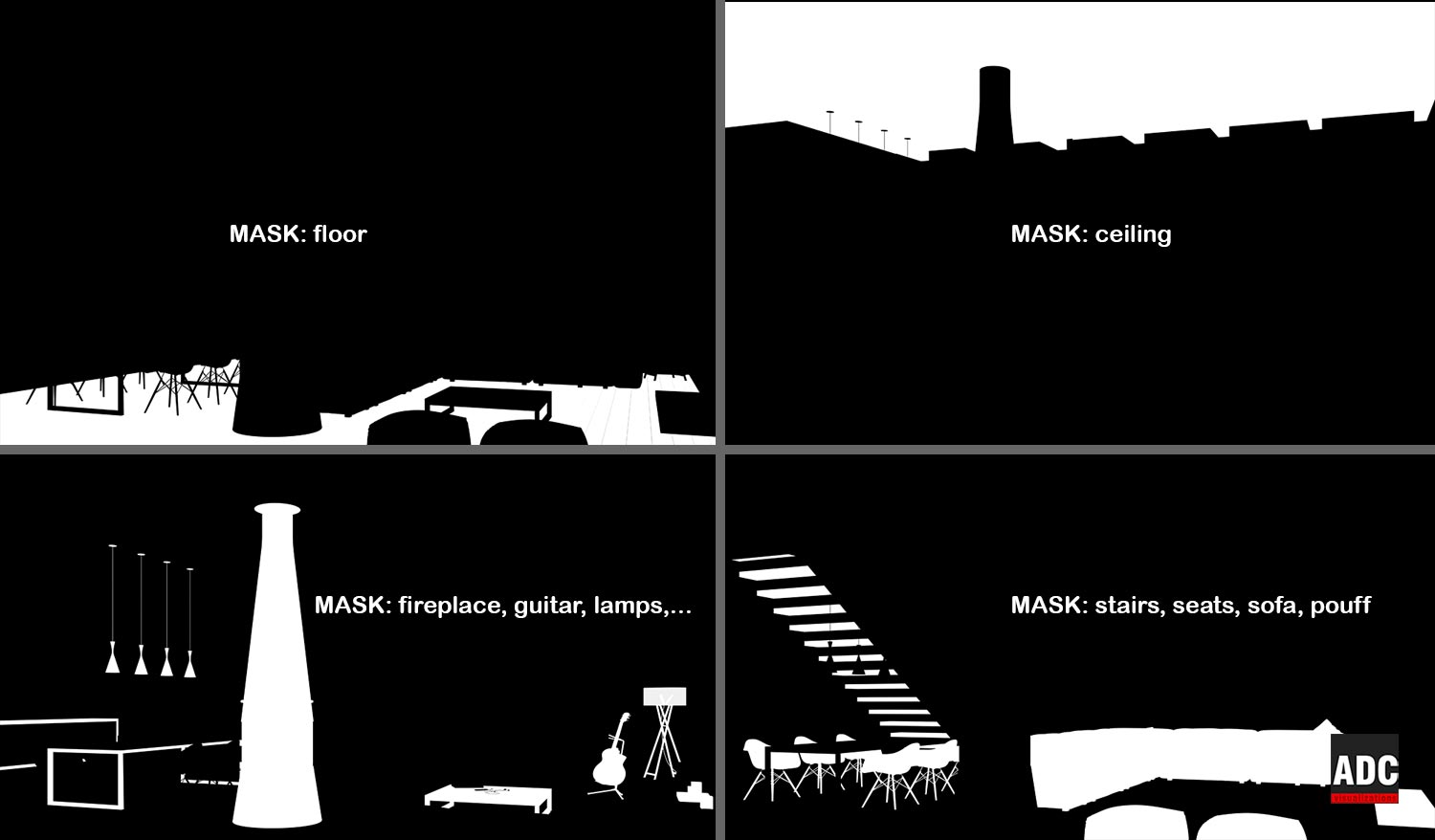
Masking elements
So, I prepared all the masks and imported them as alpha channel in
Photoshop so I could easily cut out them by selecting the alpha channel
and creating a "layer via copy".
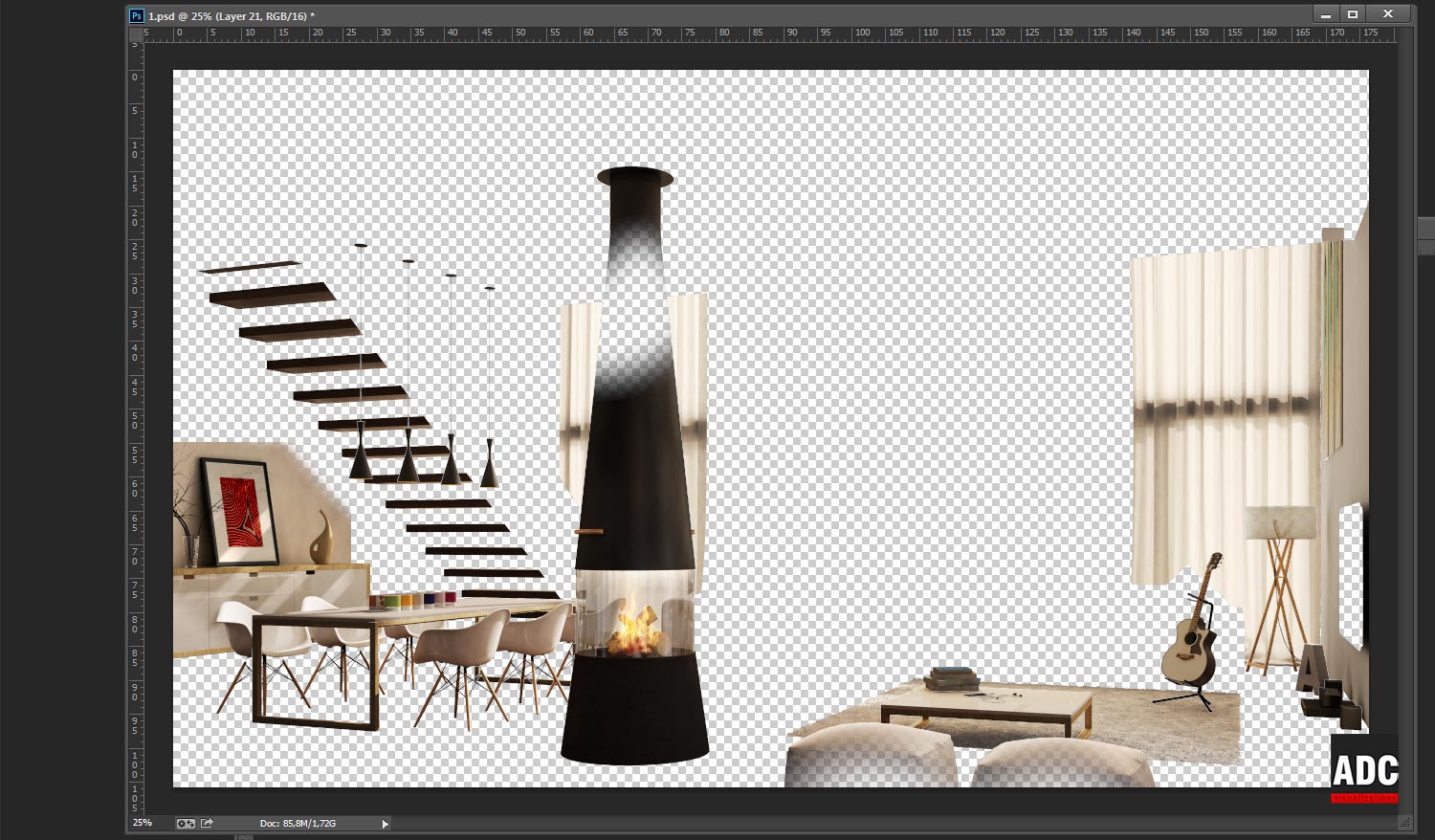
Cut-out objects in Photoshop

You can mask by material, by single object... it's your choice!
Now that I have all the elements cut-out, I can start tweaking them, adjusting their curves, saturation, levels and so on...
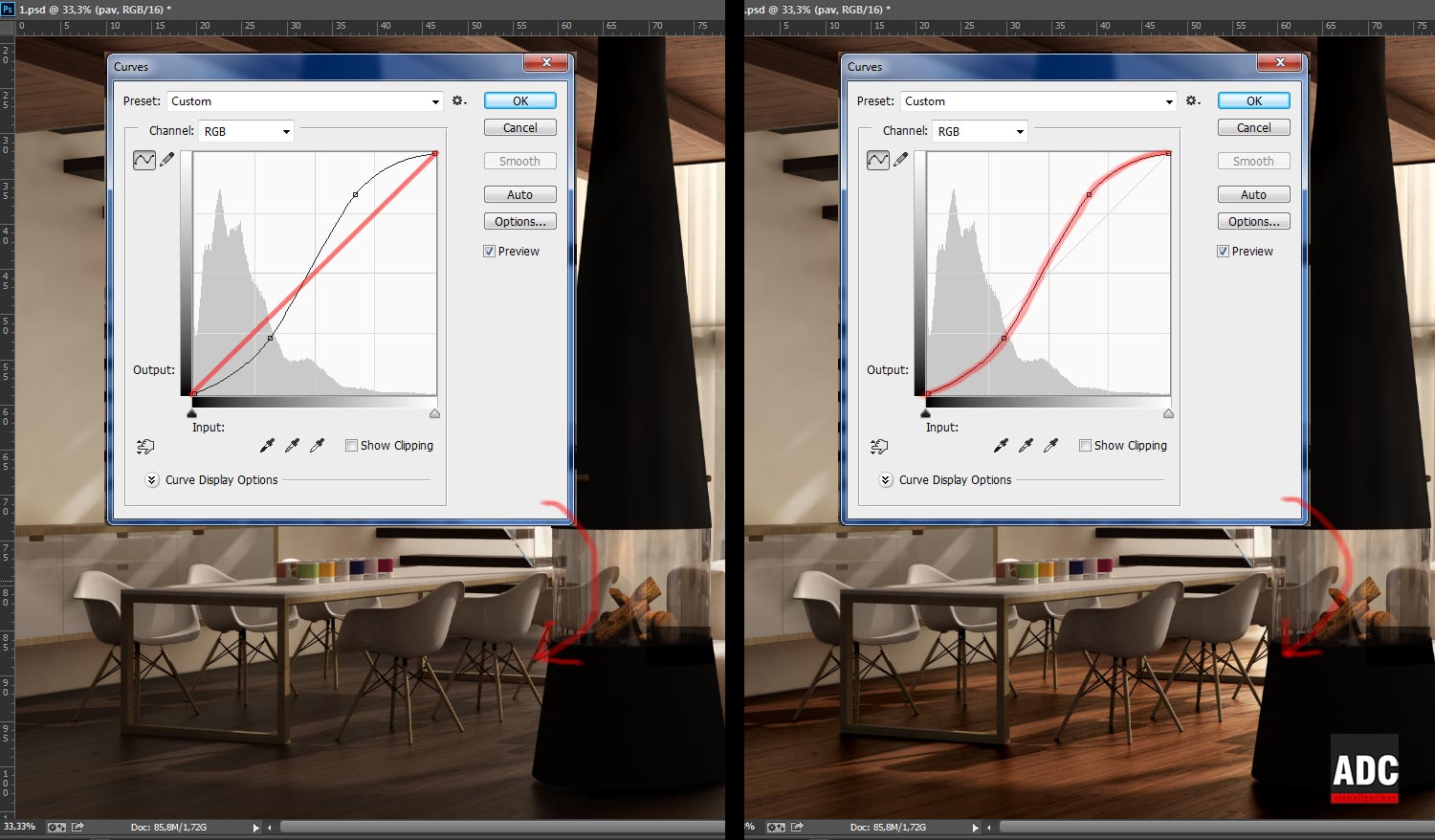
A comparison between the floor before the
tweaking (image on left with curves unchanged) and after the tweaking
(image on the right with a curve that controls the amount of
darkness/hi-lights and contrast). Just play with curves until you are
satisfied. The curve shown here works for me most of the time.
So, with this method, I have found the look I wanted for the floor in
just ONE minute, without test-rendering it 10 times: I only had to set
the diffuse and reflection textures right: color correction, saturation
and exposure are refined in Photoshop.
Same for any other objects in this scene: walls, ceiling, sofa,
lamps, curtains, etc - I have full control of the look of anything on
the image! And on the other hand I could merge objects in the scene
without rendering the full image once again. I can also change color of
an object if it doesn't affect other objects or appear in reflections.
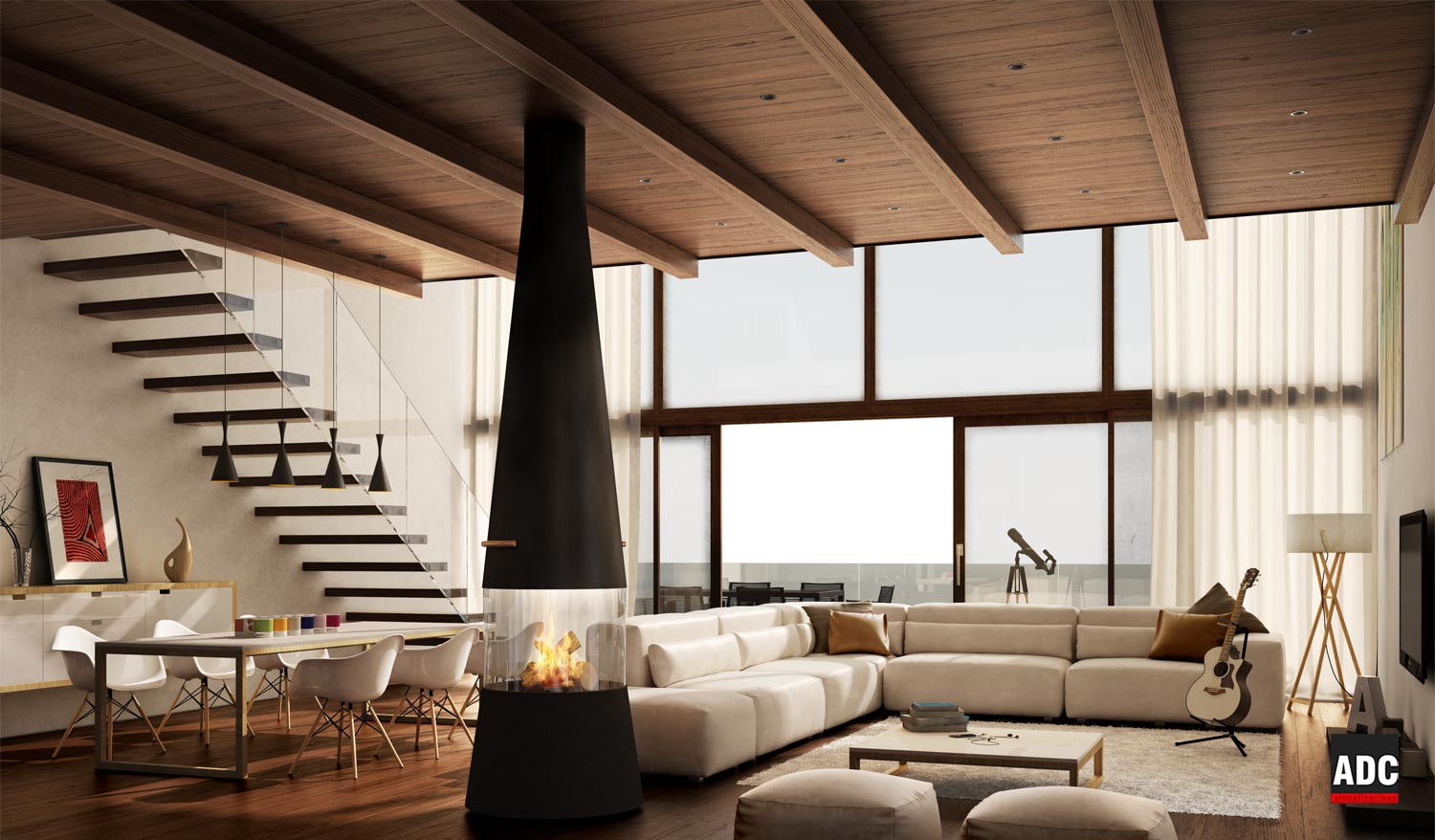
This is the final result after the tweaking
We are pretty done here. Just choose a nice looking background for
the image. I had no real location so I could put a mountain background I
liked the most, so I tried this one, after days of tests. (Yeah, while
I'm saving time for rendering, sometimes I waste a lot of time choosing
the right background :D)
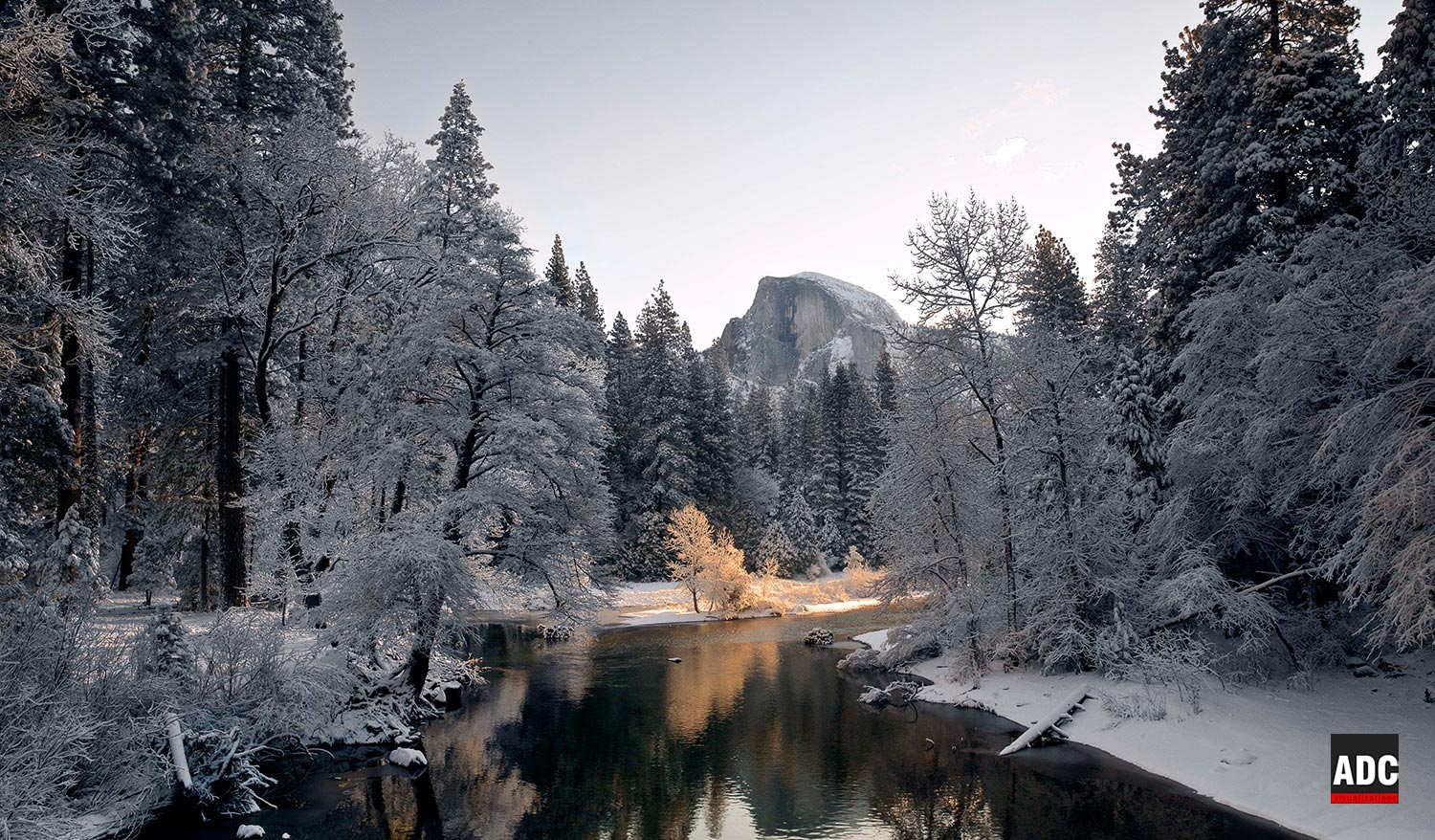
Background image
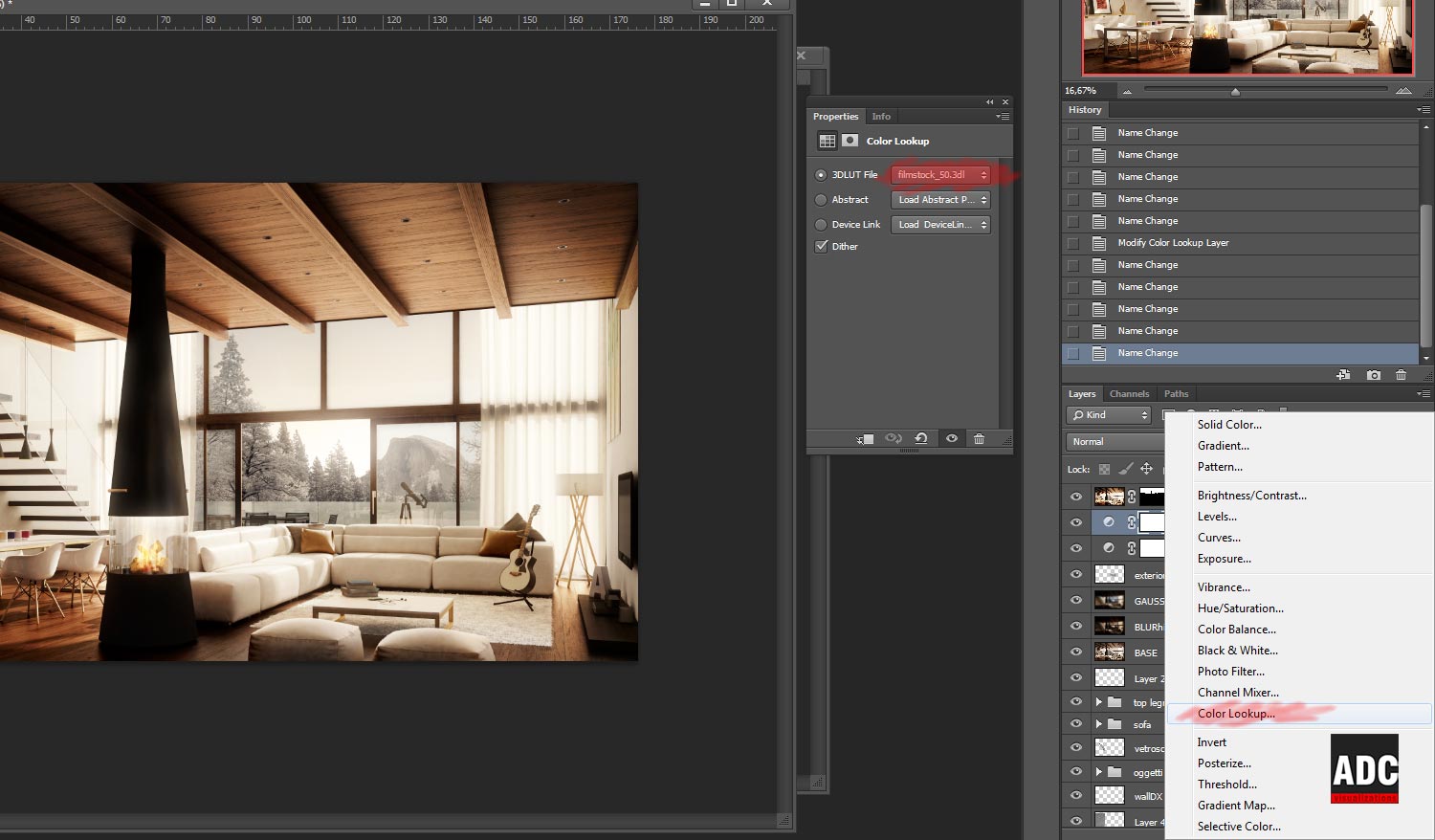
And now the final few layers, adjusting curves
once again, adding some highlights via GAUSSIAN blur (value depends on
resolution) and setting the layer to SCREEN mode. Then I used an
adjusting layer called "COLOR LOOKUP" to retouch the final
shadows/highlights, setting it to "filmstock_50.3dl":

That's it! Here's the complete LAYER LIST of my precious PSD file

Final image
I hope you've found useful tips and tricks in this making of. This is
the workflow I use most of the time. If you have any questions, find me
on Facebook: ADC Visualizations.
Courtesy : http://www.evermotion.org/tutorials/show/8721/making-of-villa-bonafe-living-room
No comments:
Post a Comment